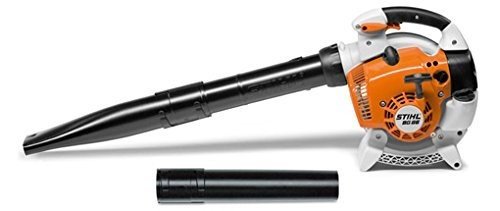The Essential Guide to Power Tools: Unlocking Potential for DIY Projects
Power tools have actually transformed the method both experts and DIY lovers approach tasks ranging from woodworking to metalworking and beyond. With a huge selection of alternatives readily available on the market, it's important to comprehend the different kinds of power tools, their applications, and how to use them securely and effectively. This extensive guide will supply important insights into the world of power tools, assisting you choose the right ones for your tasks while making sure security and performance.
Types of Power Tools
Power tools can be broadly categorized into 2 classifications: corded and cordless. Tool Shop has its benefits and downsides, making them suitable for numerous applications. Below is a breakdown of common power tools you might consider.
Corded Power Tools
Corded tools are powered through an electrical outlet, offering constant power without the requirement for battery management. Below are some common corded power tools:
Drills
- Application: Drilling holes and driving screws.
- Features: Typically have higher torque and continuous power.
Saws
- Types: Circular saw, jigsaw, band saw.
- Application: Cutting wood, metal, and other materials.
- Functions: Greater cutting power and precision.
Mills
- Application: Grinding, sharpening, and polishing.
- Features: High RPM (revolutions per minute) for efficient work.
Planers
- Application: Smoothing wood surface areas.
- Functions: Adjustable depth for various densities.
Cordless Power Tools
Cordless tools run on rechargeable batteries, using convenience and portability. Here are a number of key cordless tools:
Cordless Drills
- Application: Drilling and screwing without the hassle of cords.
- Features: Lightweight and easy to maneuver.
Reciprocating Saws
- Application: Demolition and cutting in tight spaces.
- Functions: Versatile blade choices for numerous materials.
Impact Drivers
- Application: Fastening screws and nuts, supplying high torque.
- Functions: Compact and created for sturdy use.
Cordless Nailers
- Application: Driving nails rapidly without manual effort.
- Features: Ideal for framing, roofing, and ending up tasks.
Security Tips for Using Power Tools
Using power tools includes fundamental dangers. It is crucial to follow safety practices to decrease the opportunity of accidents. Here are some important security tips:
Wear Personal Protective Equipment (PPE):
- Safety glasses to safeguard eyes.
- Hearing protection when needed.
- Gloves appropriate for the job at hand.
- Check out the Manual:
Familiarize yourself with the tool's functions, capabilities, and constraints. - Check Tools Regularly:
Check for any indications of wear or damage before use. - Work in a Clean Area:
Keep the work space organized to avoid journey risks. - Use the Right Tool for the Job:
Ensure the tool is designed for your specific task to prevent misuse. - Disconnect When Changing Accessories:
Always detach tools from power sources when altering bits or blades to avoid unintended activation.
Best Practices for Maintaining Your Power Tools
Proper upkeep extends the life of power tools, guaranteeing they perform effectively when needed. Below are some best practices:
- Clean After Each Use:
Remove dust, debris, and any other contaminants. - Store Properly:
Keep tools in a dry, secure place, preferably with protective sheathing. - Examine and Replace Batteries:
Regularly examine rechargeable batteries and replace them as required. - Sharpen Blades:
Keep cutting edges sharp for better performance and safety. - Schedule Professional Servicing:
Occasionally get your tools serviced by an expert, specifically if they are utilized regularly.
Often Asked Questions (FAQs)
1. What are the main distinctions in between corded and cordless power tools?
Corded tools provide constant power and are typically more potent, making them ideal for heavy-duty jobs. Cordless tools, alternatively, offer greater movement and convenience.
2. How do I pick the right power tool for my project?
Think about the kind of work, needed power, and whether mobility is important. Checking out evaluations and getting recommendations can likewise help guarantee you pick the appropriate tool.
3. How typically should I perform upkeep on my power tools?
It depends upon use frequency. For regularly used tools, a comprehensive cleansing and evaluation after every usage is advisable. Less often utilized tools can be checked and kept quarterly.
4. Exist battery types I should prefer for cordless tools?
Lithium-ion batteries are typically preferred for their lighter weight and longer life compared to nickel-cadmium batteries.
5. Is it safe to utilize power tools in wet conditions?
No, operating power tools in damp conditions postures considerable dangers of electric shock. Constantly ensure your work area is dry.
Power tools have actually become important in various applications, from enthusiast woodworking to professional building. Understanding the types of tools available, sticking to safety procedures, and keeping them appropriately ensures that these tools can be used to their full capacity. As technology advances, power tools continue to progress, making it important for users to stay informed about the most current innovations and best practices. When utilized properly, power tools can change any task into a work of art.
Table: Overview of Common Power Tools
| Tool Type | Application | Source of power | Secret Features |
|---|---|---|---|
| Corded Drill | Drilling/Screwing | Corded | Continuous power, high torque |
| Circular Saw | Cutting | Corded | Accuracy cutting, different sizes |
| Cordless Drill | Drilling/Screwing | Cordless | Light-weight, portable |
| Reciprocating Saw | Demolition/Cutting | Cordless | Versatile for various materials |
| Effect Driver | Securing | Cordless | High torque, compact style |
| Mill | Grinding/Sharpening | Corded | High RPM for efficient work |
| Cordless Nailer | Driving Nails | Cordless | Quick fastening, no manual effort |
By empowering people with the understanding of picking and properly utilizing power tools, this guide seeks to improve performance, safety, and total complete satisfaction in DIY and professional jobs alike.

